Rait lands
The Castles Scotland site notes that Rait castle was once the Barony and ancient Thanedom of the Northern sept of the Raits, before being won by the Comyns (Cummings). The castle was of some importance, being situated on route between Inverness and Forres. It has many unusual features dating from the 14th century. The Raits, who held the Thanedom in 1238 appear to have been a very strong clan, their Chief's holding the Lordship of Meikle Geddes, Rait and Petty, the rich agricultural plain near Inverness. At this time the lands in the area were held by both the Clan Chattan (led by Clan Mackintosh) and the de Raits who were pro-Edward in the Wars of Independence. Two of the Raits of that Ilk, Sir Gervaise and Sir Andrew de Rait both took active part in battles in support of the English. The Raits were removed from the castle after King Robert I was installed [in 1306] and Angus Chattan, a supporter of the Bruce, was installed.
Texts refer to the Castle of Rait, in the parish of Nairn, as probably the seat of Rait of that ilk. The ancient family of de Rathes (Rait/Rhet) clearly possessed lands in the vicinity of their Rait Castle in Nairn (though there were other lands of Rathe/Rate/Raite near Kingussie which appear to have been associated and/or perhaps confused with the Nairn lands - references are included below.) Although the Raits were apparently evicted from their castle, they were perhaps permitted to keep (or return to) their lands since these were forfeit following the murder of the Thane of Cawdor and the Rait family’s subsequent flight to the Mearns. But where exactly were these lands? Who actually owned them? Although Sir Gervase de Rathe owned land, we are not sure where these lands are since his name, unlike others, is not connected with them (see also under the Castles of Rait.) And what happened to the lands thereafter?
Out of interest I have tried to piece together chronologically some of their later history taken from a number of official (state) as well local sources (such as: Registrum Episcopatus Moraviensis (1837); Genealogical Collections concerning Families in Scotland (1900); A Genealogical Deduction of the Family of Rose of Kilravock (1848); the Book of [papers of] the Thanes of Cawdor 1236-1742 (1859); Historical Memoirs of the House and Clan of Mackintosh and of the Clan Chattan (1880); the Invereshie book of Clan Macpherson (1840s); and others including Shaw’s History of the Province of Moray (1882) and Bain’s History of Nairnshire (1893) and the websites The Paradox of Medieval Scotland 1093-1286 and Records of the Parliaments of Scotland to 1707. These sources contain various charters and notes – many in Latin concerning the transfer of the estates. In most instances where I have extracted bits I have left the original texts – with all their differing spellings. For sake of completeness, I have also included the early references to the lands of Rait. (It should be noted that although I have included references below to the place of Rait near Kingussie (old Moray, now Invernessshire) I am not including the lands of Rait in Perthshire here, nor the lands of Raith in Ayrshire - see under Other Raitt Locations. where also much more detail about Raitts near Kingussie will be found.)
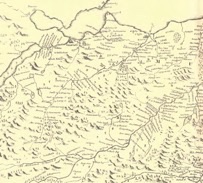
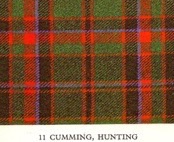
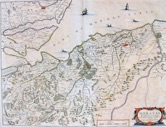
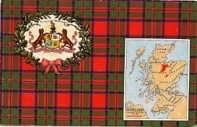
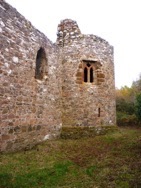
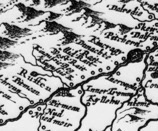
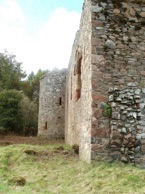

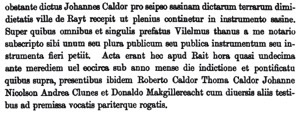
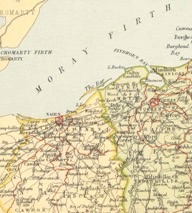
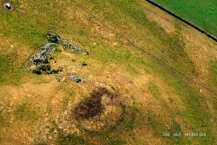

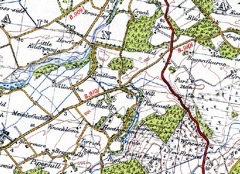
The Huntly rental of Badenoch for the year 1603 shows that Mackintosh of Mackintosh appears as feuar for the lands of Rait (amongst others)
Lachlan, the new chief, 17th Laird of Mackintosh, was only thirteen years of age at his grandfather's death in 1608. His uncle, William of Raits and Benchar, performed the duties of tutor with ability and prudence, and with strict regard to the interests of both chief and clan. This William established the Borlum branch of Clan Mackintosh. He had a right from his father to the lands of Benchar and Raits in Badenoch, and acquired a right to Borlum, in the parish of Doras.
Circa 1609, John Macpherson, tutor of Invereshie, proposed to lead his tribe (family of Clan Vurrich) into the services of Mackintosh on the condition that William Mackintosh of Borlum should agree to sell him the lands of Raits (offer refused!) This William was the grandson of the above William of Raits and Benchar and he had purchased the lands of Raits - “on which stood Raits Castle, a ruined stronghold of the Comyns, and where now stands the mansion of Belleville, occupied by James Macpherson of Ossianic celebrity” - from the Gordons. William of Borlum was apparently a military man - a Brigadier - who was one of the small force of Scots and Spaniards who landed in Lewis under the command of the Marquis of Tullibardine and the Earls Marischal and Seaforth as part of the Jacobite expedition in Scotland in 1719. He set the example of planting on his own lands at Raits in Badenoch.
However, in the early days of April 1609, a great gathering of the whole Clan Chattan - except the distant offshoots in Aberdeenshire and Perthshire - was held at Termit in Petty, one of the holdings of Angus mac William…..for the purpose of peaceably ending all their quarrels, and of swearing a firm friendship and union for the future under Mackintosh as their "Captain and Chief." The band, drawn up and written by the Common Clerk of Inverness, was as
follows:
“At Termett, the 4th day of April, the year of God 1609, it is appointed, bonded, contracted, concorded, finally ended, and agreed betwixt the honourable persons and parties as follows viz:........
Lachlan Mackintosh of Cask for himself and taking the burden in and upon him of William Mackintosh of Rait and remanent of that surname descended of that house with their own consent under subscribing;.........
The signature of those who could write are as follows: — William M'intosh in Rait
Kilrawock lost the lands of half Rait by “Recognition”, having alienated some part of them without licence of the superior, the King. James Campbell, in Rait, the donator, conveyed them to Cawdor on 2 April 1611.
In 1615 we read that “In end the said Sir Alexander haveing succedit to the wadsett of the landis of Raittis, being at my lious and the collaterallis thairof, the said Sir Alexander did dispone the propertie according to the soume of thrie thowsand merkis that wes auchtand thairvpone, and for the sevin yeir tak, the dcutie of the land extending to four chalder wictuall, by pultrie and ervice….. The said Sir Alexander dischargit to me thre hundrethe merkis of the said soume, sua that the said Sir Alexander receivit no moir money fra me except aucht thowsand merkis for the landis of Fynnisfeld. and Rait, extending in the haill to alevin thowsand merkis.”
Another contract regarding a sale of wood is dated 18 July 1615. Signed by Huchon Ross of Kilraok, one of the witnesses was James Campbell of Rait.
About 1622 arrangements were made for wadsets on Reat-Castell – it was thought expedient that James Campbell in Reat by created chalmerlane and liwing in the northe.
On 6 February 1623, a charter passed under the great seal in favour of John Campbell younger of Calder, and the heirs-male lawfully procreat betwixt him and Elizabeth Urquart his spouse.... all the lands of the thanage and barony of Calder ...... together with the lands of Geddes and Rait. They had married on 9 Aug 1622 in Edinburgh – as part of the settlement was the wadset on Hiltown of Rait to John Calder, son to umquhile Thomas Calder in Clunes of £1000 Ö and on the lands of Castletown of Rait to David Hay of Fynesfield of 3000 merks.
Around 1628, Andrew (3rd son to John Mcpherson of Nood/Nuide) acquired the wadset right of the Davoch of Wester Raits. His eldest son John later excambed his wadset right of Raits, for ane wadset right of the lands of Benchar (an ancient possession of the Macintoshes of
Borlum).
Lachlan Mackintosh, the successor of William of Benchar and Raits, appears in the Valuation Roll of 1644 as of Borlum, his lands there being assessed at £666 13s. 4d. Scots, and Benchar and Raits at £500 Scots, both considerable sums in those days
John Campbell prior of Ardchattan has gift of the non-entry of the lands of Geddes and Rait from Alexander Ogilvie of Dum, the superior, dated 18 February 1655.
Sir Hugh (Calder?) purchased Raite Castle and Raite Lone from John Iloy of Lochloy in 1678.
----------
As an end note, as noted above in the neighbourhood of Rait Castle are also Raitknock and Raitloan (also Raitlone) – possibly, like Rait Farm, taking their name from the castle, but equally possible being in existence long before the castle was built. The Boundary Commissioners for Scotland in 1889 decided that “the detached part of the Parish of Cawdor (i.e 162 acres situated at or nearby Raitknock) shall cease to be part of that Parish and shall be part of the Parish of Nairn.”
Rait Castle cropmark © James Bone
There arose a controversy between the laird of Mackintosh and John Campbell of Calder, knight, who married Muriel Calder, heiress of Calder, concerning the lands of Meikle-Geddes and Rait. The families of Mackintosh, and Campbell of Calder, although they were bound together by many bonds of friendship and fraternity, yet they were on three occasions grievously troubled with mutual strife. The first controversy was about the lands of Rait and Geddes. After many atrocious deeds, reconciliation was made between them, on this condition, that Mackintosh should possess these disputed lands while he lived; which agreement was ratified by oath, and committed to writing at Bendchar in Badenoch on 20 August 1521, still extant among the charters of Mackintosh.
Another record states that during his chiefship Lachlan Beg, 14th chief, entered into bands of amity and manrent with Campbell of Calder on 10 August 1521. This band was entered into in consequence of some debates and controversies betwixt them concerning the right to Raits and Meikle Geddes. It was decided by mutual friends that Calder had the better right to the lands, but that Mackintosh should hold them during his life.]
The following contract and discharge dated 15 July 1531 show the acquisition of the lands of Mekil-Geddes and Half Rait, which had long been the inheritance of a race of Ogilvies, in exchange for lands around Forres. It was endorsed by Jhone Campbell of Cawdor, knycht and Johnne Ogiluy off Carnossy. (Sir John Campbell acquires the lands of Mekill Geddes and Half Rait for 1300 merks from John Ogilvie of Camoussies. Dated at Elgin, 16 July 1532). In fact, John Ogilvy, grandson of Sir Walter Ogilvy, Lord Banff, in 1532 excambed Mekill Geddes and Rait with Sir John Campbell of Calder, for Moy. Meikle Geddes and half Raite were previously held in feu-farm of the Setons, for an annual of £20.
In 1510 Muiriel Calder, posthumous child of John Calder, who died 1494, was married to Sir John Campbell, third son of Argyle, who was her ward. Sir John Campbell of Calder in 1533 purchased from John Ogilvie of Carnousie, Raite and the fort of it…..
Janet Cawdor, sister to Lady Muriel, daughter of John of Cawdor, was designated tenant of Half Rait and Little Banchar in 1542. However, on 30 September 1542 occurs a deed by Sir J. Campbell and the lady Muriel, settling on their son Alexander, the Easter half lands of Rait, as they were occupied and settled by Janet Caldor and John Ros, alias Bayne.
On the 16th of August 1545, a Crown-charter passed, of the half-lands of Rait.....resigned by Sir John and Dame Muriel in favour of their son and apparent heir, Archibald..... Following the death of Archibald in December 1551 all his lands passed to his son and heir John Campbell. However it seems that the lands of Geddes and Rait were later (1554) given as a gift to John’s uncle and guardian, John Campbell, prior of Ardchatten. In fact the record notes that John Ogilvy’s son, Alexander, disponed his superiority of Geddes and Rait to Mr John Campbell, prior of Ardchattane on 18 February 1555.
In 1554 there were some transactions between Catherine, Countess of Craufurde and her brother Master Alexander Campbell of lines, who sold her, for 1000 marks, under reversion, his lands of Rait, extending to eight ploughs, reserving two ploughs called Hilltown of Rait.... On 8 May 1579 these lands were redeemed by Cawdor from James Lord Ogilviy.
A letter from Argyll to Hew Ros of Kilrayg dated 23 Aug 1560 urges “….Prayand yow to assist and fortefie our seruant Andro Ros berar heirof, in his landis of Rait, and lat him nocht be wrangit…..” Another letter from Argyll to Houcheon of Kylranye (ane honorable man) on 5 September 1560 states “As to the landis of Geddas, halff Reatt, Kinstare, ye sall superseid ony court halding on thame, quhill I be farder awisit ; and God be with yow.”
The following deed is curious as an early specimen of a common agricultural lease, and as proving that the ladies of Nairnside could sign their names in 1572. The granter was a daughter of the Laird of Cawdor. She writes: “Be it kend to all men be thir present letteres, me Dame Katherene Campbell comptas of Crawfuird, to hawe set and for maill lattin and be thir presentis settis and for maill lattis to my belowit Dawid Hay in Casteltowne of Rait, his airis, assiguayes and subtennentis of na hear degree nor him self, all and hail the tway plewchis landis of the Castell toun of Rait, with the ailhous and ailhowscroft of the samen, with thair pertenentis lyand within the shirefdome of Narne”
On the 9th June 1573, Dame Murield Caldor, fear of the barronye and thayndome of Caldor, ordained procurators • • • to resigne all and haill my landis of the thaynedom and baronie of Calder witht thair toure, the landis and barronye of Clunes and Boytht, the landis of Balmakaytht, of Rait lyand within the sherifdome of Nan,
Bain writes “The Church half-lands of Fleenasmore, which had been let on tack to Cawdor, were finally granted to Sir John by the Bishop of Moray, and he settled them on his son Alexander along with the lands of Raite. Some few years after, the Countess of Crawford, who was devotedly attached to her brothers, paid to Alexander £1000 for the reversion of Raite. The property comes into her hands, and she grants to "her beloved David Hay of the Castletown of Raite, all and haill the two plough lands of the Castletown of Raite with the alehouse and alecroft thereof," for a period of five years, at an annual rent of six merks.
One of the clauses of the lease is interesting—while David may assign his lease to his heirs, assignees, and sub-tenants, it is expressly stipulated that they must be "of no higher degree nor himself." The descendants of Alexander Calder of Clunas occupied as kindly tenants the "Hilltown of Raite," and they were proving themselves rather troublesome neighbours to Duncan Campbell, brother of the Countess.
On 10 May 1585 it seems that boundaries were established between the lands of interested parties. Cawdore lands of Rait and Mill of Rait to be marched from Kilravock lands of Easter Geddes by the burn as it then flowed freelie be natural descent fry the quheel of the mill of Rait into the water of Nairn, and the hous biggit be William Ros on east sude of the Untak of the said mill of Rait to be demolessit....
Earliest rental of Cawdor, Arderseir, Delnics, and Rait, in 1591.
Alexander Cummin (Comyn) held possession of the lands of Rait and Geddes “of right belonging to Mackintosh” circa 1411. The family became known as Cummins of Rait.
Around 1422, we learn that the Hays of Lochloy in the course of a generation or two became extensive landowners. Besides Lochloy, they had Inshoch, Park, Kinnudie, Meikle Urchany, Wester Raite, Foynesfield, Dallas, and other possessions in the north
In 1424, Robert Comyn, 13th Chief of Altyre seized control of the Chattan/MacKintosh lands of Meikle Geddes and Rait.
Precept of seisin by Alexander of Islay, Earl of Ross, Lord of the Isles, in favour of William of Cawdor, as heir of his father, Donald of Cawdor, in the Thanedom of Cawdor, and the offices of sheriffship and constabulary of Nairn, with the assize ale and fish, and an annual rent of 6 merks from Belmakeith; the lands of Both and Banchor; and the half lands of Rait; lying in the earldom of Moray and sheriffdom of Nairn. Dated at Inverness, 17 August 1442.
A part of Raite was Calder's (Cawdor) property in 1442 {Pen. Cald.); another part of it with Meikle Geddes, was the property of Ogilvie of Carnoustie, from whom Sir John Campbell of Calder made the purchase anno 1432 (Ibid)-- South of Raite lye the lands of Urchany, once a part of the estate of Park. This is also reported as: The Hays of Lochloy in the course of a generation or two became extensive landowners. Besides Lochloy, they had Inshoch, Park, Kinnudie, Meikle Urchany, Wester Raite, Foynesfield, Dallas, and other possessions in the north
The feud between the Mackintoshes and Comyns culminated (after the slaughter at Rait Castle) resulted in the transfer to Mackintosh of the lands of Rait and Geddes which had been withheld from his family for more than a century. Malcolm Mackintosh (10th chief) lost no time in establishing his title to these lands, obtaining the heritable right of them, from Alexander Lord Gordon (afterwards Earl of Huntly) to whom they then belonged, on the 5th October 1442.
On 8 November 1451 at Stirling, King James II grants to John, Bishop of Moray – the cappelle de Rait in the barony of Spiney. Given the names of other places nearby, this is clearly the Kingussie area, rather than Nairn.
The marriage between John feaar of Cawdor and Isabel Rose of Kilravock in 1492 was perhaps not completed immediately. So, at least we are led to infer from disputes about the lands of Banchor and Half Raitt, allocated for their living whether they were “unsukkyn” or asricted to the Mill of Drynachan. The titles of the following instruments, endorsed in the Thane’s hand, will perhaps be considered sufficient notice of the family misunderstanding. The first, bearing the date 27 April 1497, engrosses the deed, executed on 26th, by which Wilyame Thane of Calder “giffis and assignis to my son Johne of Calder ....... my half of Rayt” – also the Myll of Rait.” (At Stirling on 22 April 1497, Thane William resigned the lands and thanage of Cawdor personally in the King’s hands in favour of his son John, These lands included “medietatem ville de Rate”).
The half lands of Rait had been an appanage of the Thanage of Cawdor for several generations. From Alexander Seton of Tullebody, Thane William acquired in feufarm the other half of Rait and the adjoining lands of Mekill-Geddes. (Letter of tack by Alexander Seton of Tullebody, to William Thane of Cawdor, of the lands of Mekill Geddes and Half Rait dated at Cawdor, 5 October 1497).
Another source states: In the Cawdor charter chest is a grant of feu-farm by Alexander Seton of Tullibody to the Thane of Cawdor, conveying to him "my lands of Meikle Geddes and my half of the mil of Rait," but not mentioning the Castle. It is dated at Elgin 26th October 1493.
There is an Instrument by Hugh Rose of Kilravock, protesting that the absence of documents relating to the seisin of the lands of Rait and the two Banchors, in favour of his daughter Elizabeth Rose, relict of the late John Caldor, shall not prejudice her right to the said lands, And in fact there was an instrument dated 13 February 1497 that stated that the Baron stopped and would not let his daughter take possession of “Halff Ratt.”
William Thane of Cawdor takes instrument, recording that he broke or annulled the seisin taken of the lands of Mekill Geddes and Half Rait, by George Ogilvie, son and heir-apparent of Walter Ogilvie of Boyne, by the symbol of breaking a plate and throwing it into the fire in the hall or house of Geddes. 29 May 1501.
Simpson in his discourse of Rait Castle and Barevan Church, Nairn, provides additional information in his summary. “The half of the lands of Rait that belonged to the Thanes of Cawdor included the mill, as appears from a writ in the Cawdor charter chest, dated 17th August 1442. In 1501, owing to the non-entry of Alexander Seton of Tullibody, the other half of the lands were bought from the Crown by Walter Ogilvie of Boyne. This action was resisted by the Thane of Cawdor, who "in the hall or house of Geddes," on 29th May 1501, solemnly annulled the sasine by the ceremony of breaking a dish and casting it into the fire. Notwithstanding this, the Ogilvies succeeded in retaining possession until finally the lands were bought from them by Sir John Campbell of Cawdor, by a contract dated at Elgin 16th July 1532. Even then the Ogilvies reserved the superiority, and so, when John Campbell of Cawdor succeeded his father as a minor in 1551, his uncle, the Prior of Ardchattan, in his capacity as tutor-in-law to the young laird, obtained a gift of non-entry of these lands from Alexander Ogilvie of Carnousie and Burn, "superior of the landis of Geddes and Rait, with the fortalice hand in the samyn." The "fortalice of Rait” recurs in a service of John Campbell of Cawdor as heir of his father, given at Nairn on 16th November 1596. The Hiltown and Castletown of Rait are on record in 1622. At what date the castle ceased to be occupied does not seem to be known, but it is perhaps significant that in Gordon of Straloch's map, circa 1650, Raitloan is shown but not Rait Castle. The well-known legend of the massacre of the Comyns by the Mackintoshes at Rait Castle is told in the New Statistical Account, and more fully by Bain; but the difficulty is to dovetail the incident into the authenticated history of the ownership. Somewhere near the castle was the chapel of St Mary of Rait, with a hermitage of which Nicholas the Hermit was the occupant in 1343.
In a charter by William the Lion, to his beloved Richard (Bishop of Moray), he granted him, among other subjects (i.e. places), the Chapel of Raite - mentioned again, as Chapel of Rathe, in a subsequent charter of William's.
“King William to Richard, bishop of Moray; has granted bishopric of Moray; and has granted and given in augmentation church of Elgin (MOR) with chapels of St Andrew (MOR) and Manbeen (MOR); church of Auldearn with chapels of Invernairn (Nairn, NAI), Rait (NAI) and Moyness (NAI). Dated 15 March 1187 and 23 March 1189 at Kinghorn.
Bain in his History of Nairnshire writes that Alexander II confirmed to Andrew, Bishop of Moray, on 12 March 1226 in Stirling, his right to various subjects including thirty acres in Whytefield (Whitefield, now Foynefield) at Rathe. A doubt may exist whether in this instance the chapel of Raite in Badenoch may not be intended, but in the canonical statute a few years later assigning the benefices, it is stated the Dean of Moray is to have the lands and Church of Auldearn and Nairn, excepting the half-davach of land at Raite which belongs to the Episcopate of Moray as a table pertinent.
However, this may not be an exact translation of the Latin by Bain. The Paradox of Medieval Scotland translation is as follows:
“King Alexander II for church of Moray and Bishop Andrew; has given land of Rothiemurchus (INV), in exchange for lands which Bishop Andrew claimed in king's forests, that is, ...... thirty acres of land in Whitefield (now Foynesfield) at Rait (NAI), ....... reserving to bishop other lands and pastures which he and his predecessors justly possessed in king's forests before this grant.” This text fits in better with the fact that Rait was held by the Crown some ten or so years later.
The Thanedom of Rait was one of the oldest manors in Nairnshire. It is first on record among a list of estates in the bailiewick of Nairn in the year 1238.
In 1238 the Crown held the following lands in thaneage in the baliwick or shire of Nairn - “The lands of Kildrummie,. Aldheren, Balnecath, Geddes, Urchany, Rait, Moyness, and Lenedycoth." However, they (including the lands of de Rate) appear to have been granted to Andrew, Bishop of Moray on 4 March 1238 at Roxburgh.
Shaw, fourth Laird of Mackintosh, was the first of his family who married a wife in the north country (Helen Calder, daughter of the Thane of Calder). He was also the first of the Mackintosh family who got possession of the lands commonly called Meikle-Geddes and Rait which his descendants retained for many years. He departed this life in the year of Christian salvation 1265.
Mackintosh records state that in 1234, Ferquhard, 3rd chief, is mentioned in an agreement between the Chapter of Moray and Alexander de Stryveline —"Fercard, Seneschalle de Badenach." This is the first mention of any connection of the family with the district of Badenoch. He died in 1240 and was succeeded by Shaw, son of his brother William. The family now began to extend their possessions. Shaw acquired the lands of Meikle Geddes and the lands and castle of Rait, on the Nairn—the latter famous in legendary history as the scene of a terrible tragedy.
The Cummin people, then a powerful family, assumed the lands of Meikle-Geddes and Rait, formerly the estate of Shaw Mackintosh. According to the Historical Memoirs of Clan Mackintosh and Clan Chattan it happened thus. “The death of the warlike Ferquhard in 1274, the youth and absence of his heir (an infant son named Angus), together with the commotions which towards the end of the 13th century rent the country, afforded to the enemies of the Mackintoshes an opportunity of evincing their antagonism too favourable not to be seized. In all probability the [Mackintosh] clan, having so many adverse circumstances to contend with, would have been borne down completely had it not been for the part which their most formidable foes took against the great Bruce. These foes were the Comyns, then in the zenith of their power and pride. Besides their considerable Lowland possessions, they held sway over the greater part of Badenoch and Moray, the great lordship of Badenoch having been granted in 1230 to Walter Comyn, son of the Justiciar of the kingdom.
Among their neighbours both in Badenoch and Moray were the Mackintoshes, with whom they were at feud for a long period; but whether this feud had existed prior to the death of Ferquhard is not certain, though it is extremely probable that it is to be dated from soon after 1236, when the Mackintoshes acquired Rothimurcus, and the Comyns themselves had been only a few years in the district. It is certain, however, that during the minority of Ferquhard's successor they seized upon his lands of Geddes and Rait, and followed up this act by surprising and taking possession of the Castle of Inverness, which had continued in the custody of the chiefs of Mackintosh, its hereditary constables.
The seizure of the lands of Geddes and Rait by the Comyns must have taken place soon after Ferquhard died in 1274 (his death may have been in 1271) because it appears that his son and heir Angus got married in 1291 and thus would presumably have resisted a takeover if he was in his late teens or early twenties.
In the short space of about thirty years the castle changed hands three times; first it was taken by the Comyns, from whom in turn it was taken in 1303 by the forces of Edward I. of England, who again lost it to the adherents of King Robert Bruce a few years later. The Mackintoshes did not regain either their position as Constables of the Castle, or their lands of Geddes and Rait, until about a hundred years afterwards, when in consequence of their increased strength and the diminished power of the Comyns, they were able to cope successfully with their once powerful foes.
The Raits are said to have been removed from their castle after King Robert I was crowned in 1306 (presumably for throwing their lot in with Edward I of England) and Angus Chattan, a supporter of the Bruce was installed.
For his services [in battle supporting Robert the Bruce] Angus Mackintosh was rewarded in 1319 with a grant of the lands of Benchar in Badenoch, and of the country stretching about six miles between Benchar and the water of Goynach - the Comyns having been expelled from that district by Bruce before the battle of Bannockburn in 1314. Besides their possessions in Badenoch, the Comyns had also been deprived of the greater part of their estate in Moray, over which district Randolph was made lord, with the title of Earl of Moray. As his lordship included the Crown lands occupied by the Mackintoshes, he was in this respect their feudal superior, which may account for his being accompanied by the chief in 1318-9, Although the district had been assigned to him, Randolph had still to win it before he could call himself its sole lord, for the Comyns in Moray were able to hold their own against him and their other assailants for some time after the rest of their name had sunk, some indeed holding out until they made terms for remaining in their possessions. Thus the Mackintosh lands of Rait and Geddes, which the Comyns had usurped, did not at once return to their rightful owners.
Incidental mention is made in 1343 of the hermit, Nicholas, of the chapel of St Mary of Rait - although this location may be at Raitts near Kingussie, it could also be at Rait Castle near Nairn with which there is also a chapel associated.
John Hay of Tullybothil founded a chapel at Kincraggie out of his lands of Lochloy, the house of Wester Raite, and certain lands and pasturage. The charter is dated at Raite in 1374. Bain says there is no "Kincraggie" in Nairnshire, but Craggie was a well-known possession which lay adjacent to .and was generally included in the estates of Knockoudie and Park which belonged to the Hays of Lochloy and Tullybothil from a very early date. Sir John Hay was Sheriff of Inverness at the time he made this grant.
In the auncient Register of the Bishoprick of Murray, John Hay of Tillibothuile, with consent of John Hay his son and appearand heir, mortifying an annuitie forth of the lands of Wester Raits and Loehloy, to the Virgin Marie's chappell at Kincraigie, 1374. It was usual at the first acquiring of a fortune, to devote something of the lands. I judge they thought it might continow the longer with their posteritie. Shaw, the historian of the province of Moray, has not noticed either of the chapelries of Rate or Geddes, though the former is a foundation as old as the time of William the Lion (1165-1214). The charter from King Alexander II is dated 3 May 1374 ar Rate.
On October 11th 1380, Alexander Stewart, Lord of Badenoch, in the most formal manner, cites the holders of certain lands of Badenoch to appear and produce their titles at the Standard Stanys of the Rathe of Kyngucy (Kingussie). Amongst others, the Bishop of Moray appeared upon this citation, not however to prove his titles to his lands of Badenoch, but to protest against the jurisdiction and the whole proceedings of the Earl, whom he refused to acknowledge as his overlord. As a result, Stewart seems to have persuaded the King Alexander II to give him lands of the church of Kingussie, which included the Chapel of Rath in Badenach (charter dated 28 October 1381 at Ruthven.)
The next ascertained Thane of Cawdor was Andrew, of whom we only hear when his son Donald succeeded to him in his hereditary offices of Sheriff of the Shire and Constable of the Royal Castle of Nairn, on 11 July 1405. Local tradition avers, that the Thane Andrew of the following precept, was slain by Sir Alexander Rait of that Ilk, 1395-1400. The family which took its name from the old Castle of Rait, beside Geddes, disappears from the North about this time.
The lands of Rait seem invariably linked with the nearby lands of Geddes or Meikle-Geddes and were at one time divided, such that we find the lands of Half Rait. In fact in Shaw’s History (1882) we read “Close by Geddes is Raite Castle. Here is an old Fort, built in the form of a square, which was anciently the seat of Raite of that Ilk, who, having killed Andrew Thane of Calder about the year 1404, was banished that county, and founded the family of Raite of Halgreen in the Mearns. A part of Raite was Calder's property in 1442; another part of it with Meikle Geddes, was the property of Ogilvie of Carnoustie, from whom Sir John Campbell of Calder made the purchase anno 1432.”
The name of Geddes is supposed to have been derived from Gildas, a British saint, who lived in the sixth century. The name is very ancient, as it is found in deeds early in the thirteenth century, and had then lost its original association, as is shown by its commonplace division into "Easter" and “Wester" Geddes. The indications point rather to there having been an early Columban cell either here or at Raite, and the Celtic name of the hermit has become unrecognisable in its form of "Geddes." The commonplace division may have had an influence on the lands of Rait, because we do come across Wester Raits and Wester Raite and it is quite clear that this refers to the area near Geddes rather than Wester Raitts near Kingussie. The term may have been used to differentiate this particular bit of land from that of Half-Rait.
The frequent references to the lands of Half-Rait probably refer to the 30 acres of land at Whytefield at Rath that King Alexander granted to Andrew, Bishop of Moray on 31 March 1226. In a statute dated 1242 assigning the benefices, it is stated the Dean of Moray is to have the lands and Church of Auldearn and Nairn, excepting the half-davach of land at Raite which belongs to the Episcopate of Moray. A davach was apparently equal to a ploughgate, i.e the amount more or less that a single plough could turn over in a season - around 50 acres or so. Thus the 30 acres at Rath (Raite) granted to Bishop Andrew would have been the approximate equivalent of a half-davach and thus is probably the land known later as Half-Rait.
These lands were presumably desirable if only by virtue of the number of times they, often contentiously, changed hands. The details provided below – because they shed light on people as well as the lands themselves - could equally have been placed under Rait Castle Owners and Occupants or under other Raitt locations together with Raitts (where there is more mention of this area), but I have preferred to place it here on a separate page. As always, the name of Rait varies - it can appear in the texts as Rate, Rait, Raite, Raites, Raitts, Rath and Rathe - and I hve made no attempt to standardize the spelling.
It would appear, though, that there are some date discrepancies, as well as locality issues, with possession of the lands by the de Rathe/Rait family which I have tried to resolve in a blog entry on the Castles of Rait.
